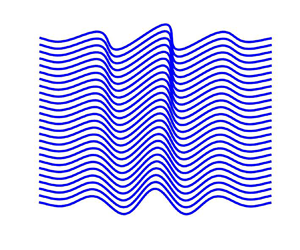No CrossRef data available.
Article contents
Evolution of wind-induced wave groups in water of finite depth
Published online by Cambridge University Press: 12 April 2024
Abstract

The generation of water waves by wind is a fundamental and much-studied problem of scientific and operational concern. One mechanism that has obtained a wide degree of acceptance and use is the Miles air shear flow instability theory in which water waves grow due to energy transfer from the air at a critical level where the wave phase speed matches the wind speed. In this paper we revisit and extend this theory by examining how the predicted wave growth rate depends on the water depth and the wind shear parameters. At the same time we include frictional effects due to water bottom stress and at the water surface, and add an additional driving term due to wave stress in the air near the sea surface, using a turbulent parametrisation. The theory is developed using a frictional modification of the usual potential flow theory for water waves, the modified Euler equations, coupled to linearised air-flow equations. To assist our analysis we develop a long-wave approximation for the key Miles growth parameter, which explicitly shows how this depends on the water depth and the wind shear parameters. Since our focus is on the development of wave groups, we present a forced nonlinear Schrödinger equation in which the forcing term describes wave growth or decay. For very shallow water the modified Euler equations are reduced to their shallow-water counterpart, which are briefly discussed using Riemann invariants.
- Type
- JFM Papers
- Information
- Copyright
- © The Author(s), 2024. Published by Cambridge University Press





